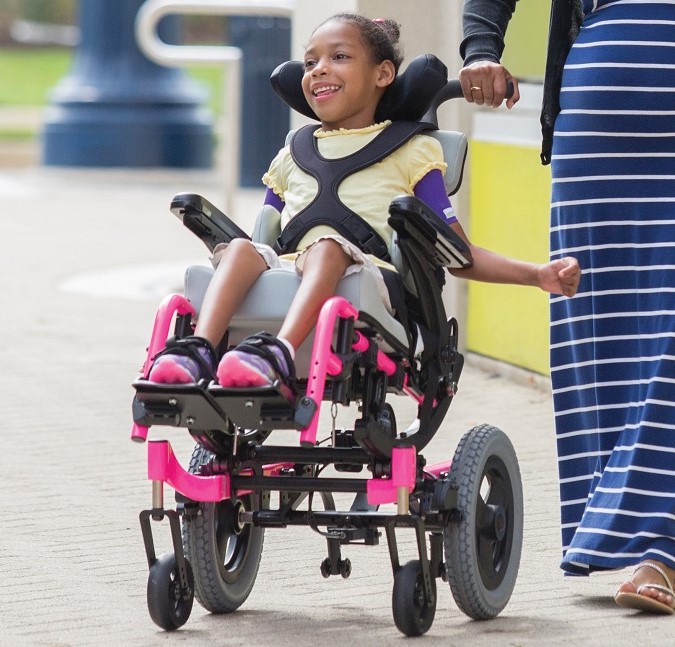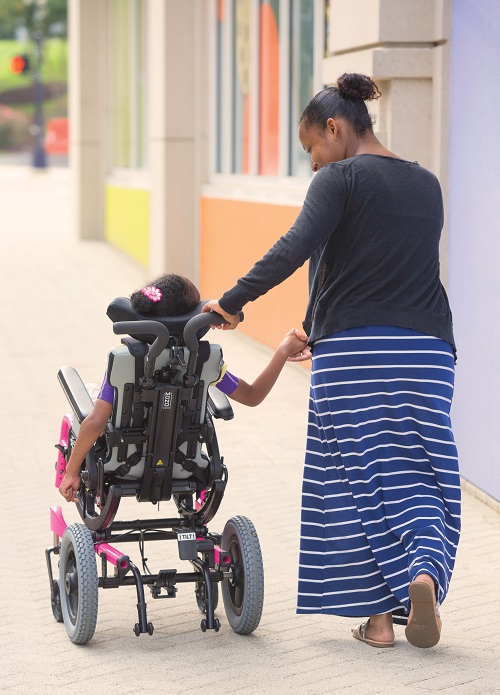CHOOSING THE RIGHT DYNAMIC SEATING

The seating needs of a client with a disability can be complex. The human body is designed to move. Movement assists the brain to develop through neuroplasticity growth and provides sensory input. Wherever possible, sitting should be an active and dynamic experience1.
Unfortunately many seating systems do not allow for movement. They may appropriately support a client in a good posture for prolonged seating, but what about the clients who need to move, due to fluctuating muscle tone, spasticity or hypotonia? A seating system should be appropriate to support each individual client needs, but, for some clients it should also allow for movement.
Dynamic Seating – What is it?
Dynamic Seating provides movement within a wheelchair or chair. When the client moves, the dynamic seating components move with the client. This helps maintain body alignment within the seating system. Dynamic seating can be a single component, or a mix of multiple components that can be melded together to meet a client’s needs2 . An example of individual dynamic components includes dynamic backrests, dynamic footrests and dynamic headrests.

Goals of Dynamic Seating3:
The overall goal of dynamic seating is to use the ‘energy’ of a seating system to channel the fluctuating muscle tone, or movements of a client with physical challenges into purposeful movements. Dynamic Seating is also designed to:
• increase sitting tolerance and compliance
• protect wheelchair and seating hardware from breakage
• decrease agitation
• increase function
• reduce active extension
• provide active range of motion
• increase strength and postural control
• reduce energy exertion
• provide vestibular input
• increase alertness

Dynamic Seating – Who is it for?
Dynamic seating may be considered appropriate for clients with increased muscle tone, or for those clients who seek out active movement4. The dynamic components absorb the extensor forces, and diffuse the forces of movement. Absorption of forces enables a client to extend, and then return to their original seated position, maintaining a neutral pelvic position.
There are 2 types of dynamic seating systems available. These are considered to be integrated seating systems, or modular seating systems:
Integrated Dynamic Seating Systems: These systems are integrated into the mobility base, meaning that the entire system must be purchased as a unit, and cannot be retrofitted onto other mobility bases. These systems often provide movement at more that one location of the body – ie – at the hips, knees and head. The dynamic movement may also be more complex – for example, the posterior seat surface may also rise, and the back canes extend – encouraging the pelvis to return to a more neutral position
Modular Dynamic Seating Systems: These systems are modular and you can pick or choose the components you need, and they can be typically used on a number of different mobility bases. Movement can be at one location, is – the hips, or several components can be combined to provide movement in more than one area5.
Some examples of modular dynamic components:
- Dynamic Headrest
- Dynamic Footrest
- Dynamic Rocker Back

Finding a balance between stability and movement is key to achieving function. Dynamic seating can facilitate this balance. Many of the dynamic components may be able to be added to an existing manual or power chair. Your experienced seating occupational therapist can help guide your decision-making process to determine who dynamic seating may be appropriate for.
Images: Rifton, Seating Dynamics, Sunrise Medical
References:
1Lori Deyo-Obler, 2013 - Dynamic Seating for Children with Disabilities - www.rifton.com
2,3Michelle L. Lange, 2017 - mobilitymgmt.com
4,5Michelle L. Lange, 2016 - www.seatingdynamics.com

